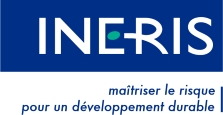Information
Edited on 02/10/2025
On 19 December 2024, the European Commission adopted a regulation banning the use of bisphenol A, its salts, other hazardous bisphenols and hazardous derivatives of bisphenols in the production of materials and articles that come into contact with foodstuffs (plastics, varnishes and coatings, printing inks, adhesives, ion exchange resins, rubbers, etc.). Unless there is a derogation, this regulation will apply from 20 July 2026.
Edited on 03/24/2023
The PFAS substitution section includes new persistent compounds: persistent, mobile and toxic (PMT) and very persistent and very mobile (vPvM) substances
Edited on 02/09/2023
The list of substances of very high concern (SVHC) or candidate substances for authorisation includes since 17 January 2023 nine additional substances, including : 2,2',6,6'-tetrabromobisphenol A, bisphenol S, bis(2-ethylhexyl)-tetrabromophthalate, perfluoroheptanoic acid and its salts and the reaction mass of octafluoro-4-(1,1,1,2,3,3,3-heptafluoropropan-2-yl)morpholine and octafluoro-4-(heptafluoropropyl)morpholine.
Edited on 12/01/2022
Germany proposes to restrict the use in mixtures and articles of bisphenol A and bisphenols with endocrine disrupting properties for the environment.
Edited on 05/20/2022
As part of the European Union's Chemicals Strategy for Sustainability, the European Commission presented its roadmap on 25 April 2022 with potential restrictions on the use of PFAS, bisphenols and C4-C6 phthalates.
Edited on 05/13/2022
The European Chemicals Agency (Echa) and Member States responsible for the assessment of more than 100 bisphenols recommend that 34 of these substances be restricted under the REACH Regulation.
Edited on 07/19/2021
Bisphénol B (BPB - n° CAS : 77-40-7) has been added to the candidate list of Substances of Very High Concern (SVHC) for authorisation due to its its endocrine disrupting properties for human health and the environment.
Edited on 03/18/2021
By 12 January 2026, Member States shall take the measures necessary to ensure that water intended for human consumption complies with the established thresholds for bisphenol A and PFAS. Nonylphenol is included in the watch list of the directive.
Edited on 03/18/2021
ANSES proposes to identify bisphenol B as a substance of very high concern (SVHC) for its endocrine disrupting properties for human health and the environment.
Edited on 01/13/2020
Since 2 January 2020, thermal paper with a bisphenol A concentration of 0.02% or more by weight may not be placed on the European market.

